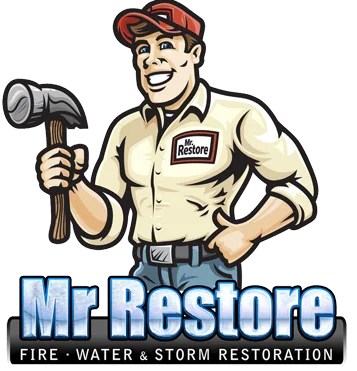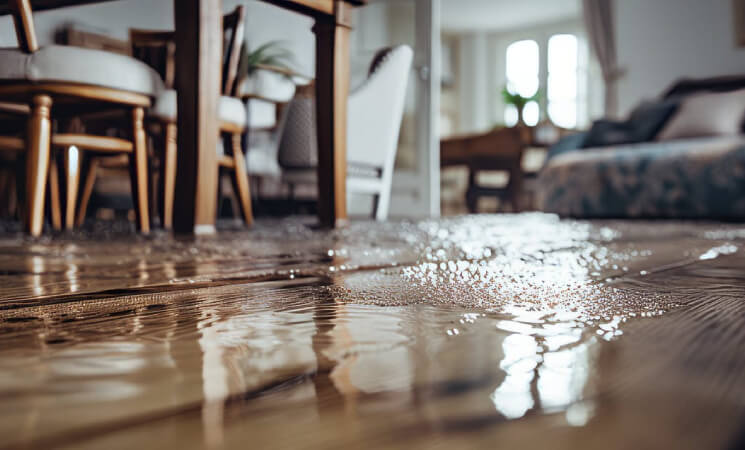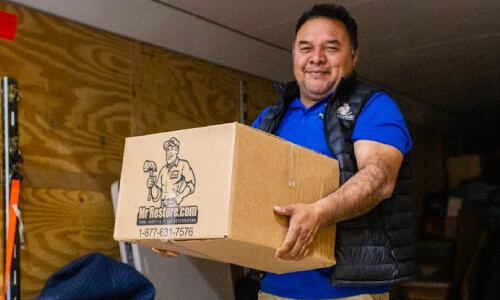Tornadoes are one of the most destructive types of storms. They can have up to 200 MPH winds and leave a trail of destruction a mile or wider. Around 1,000 tornadoes form in the U.S. each year. Most happen in the spring or summer, but they can happen at any time of year. Texas is no stranger to tornadoes and Mr. Restore is here to help you and your family feel safe during any type of storm. With tornado season just around the corner, here are 11 things you can do to prepare.
1. Shelter
The Federal Emergency Management Association suggest that you consider building a concrete reinforced safe room if you live in an area where tornadoes are common. It should be in the center of your home or in an underground storm cellar or an interior room without windows. A closet in your home away from windows is also a good option.
Automobiles and mobile homes are the worst places to be in a tornado. If you are in one during a tornado, get out. Look for shelter in either a building or a low spot, such as a ditch.
Don’t try to open windows before a tornado. It doesn’t prevent any damage. You could even be injured by flying glass and debris.
2. Food and Water
Some supplies may not be readily available after a major tornado outbreak such as:
- Drinking water
- Nonperishable food (cans with an easy open top and dried food are best)
Rotate your emergency food periodically. Check the expiration date to make sure they’re still good.
3. Lighting
The effects of storm damage may have your neighborhood without power or lights. You need to keep several flashlights and extra batteries stored in your storm kit. Portable lamps that run on batteries are another option. Candles are not recommended since they can cause fires after a storm.
4. Radio
A battery-powered weather radio is another important tool to stay prepared during a storm. Radios will help your family stay informed during a tornado warning. It’s also helpful to have after the storm has passed to hear updates.
5. Medical Supplies
A first aid kit should be stored in your storm shelter, basement or safe room. If you or anyone in your household take prescription medications, make sure to bring them with you to the shelter during a storm.
6. Cash
Keep some cash on hand or stored in your storm shelter. You might need it after a tornado if the power is still out.
7. Roof Repairs
Keep supplies in your storm shelter for making roof repairs after a tornado has passed, such as:
- Tarps
- Plastic sheeting
- Nails
- Duct tape
8. Tools
A toolbox is another item that would be good to keep in your storm shelter for use after the storm. It should have all the basic tools like:
- Hammer
- Screwdriver
- Pliers
- Handsaw
- Utility knife
9. Generator
A generator can provide power after a tornado. It’s important to operate it in the open and a safe distance from your home. They shouldn’t be used in an enclosed building, garage, carport or near open windows or doors. You also shouldn’t try to provide more power than your generator can supply.
Keep a portable propane tank and gas can full for your generator. Store them in a secure location away from your home.
10. Insurance Records
You should also keep copies of any insurance policies and a home inventory in a safe location. This can include a safe deposit box or a safe in a storm resistant location, as well as an online format.
11. Be Aware
After the storm has passed, use caution and check on your neighbors. When doing so, avoid any downed power lines or ruptured gas lines or unstable structures.
Following these tips can keep you safe during and after a storm, but there is nothing that will prevent a tornado from occurring. If your home was in the path of a tornado and received damage, give Mr. Restore a call. We have all the right resources to get your home back to normal quickly so that you can get back to normal.






